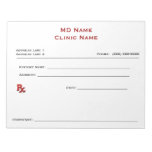
For a long time in medicine, a ‘bundle’ referred to a bunch of parallel fibers in the body, like a muscle bundle or vascular bundle. Now that we’re moving toward value-based care, however, a much more common term is emerging: “bundled codes.”
To set up the right incentives for value-based healthcare, both Japan and the United States have been gradually moving toward more bundled payments for medical care, according to the Medical Group Management Association (MGMA) June 2015 article “Taking the leap to make bundled payments work.”
Whether you agree with this or not, CMS states “research has shown that bundled payments can align incentives for providers – hospitals, post-acute care providers, physicians, and other practitioners – allowing them to work closely together across all specialties and settings.”
Bundled coding essentially pays one amount. Multiple providers who treat the same patient at the same time share this payment. Historically, providers billed separately for their services. The Centers for Medicaid & Medicare Services believes this can “result in fragmented care with minimal coordination across providers and health care settings. It also rewards the quantity of services offered by providers rather than the quality of care furnished.”
A Move Toward More Mandatory Bundling?
In July 2015, CMS announced proposed mandatory bundling for hip and knee replacement surgery in 75 geographic areas. This represents the first time Medicare proposes making bundled payments mandatory for doctors, hospitals and other providers. Rob Lazerow, the Advisory Board’s expert on payment reform, told The Daily Briefing’s Dan Diamond
“Introducing a mandatory program is a substantial change for providers, who generally assumed bundles would be optional for the foreseeable future,” Mr. Lazerow continues. He adds that CMS is taking a minimally disruptive approach by creating a virtual bundle. “As a result, no provider has to collect the payment, or play the role of the ‘banker’ as I like to call it. Instead, everyone will continue to be paid by CMS directly. That reduces the administrative burden involved.”
Why start with joint replacement surgeries? In a news release, CMS explains that hip and knee replacements are some of the most common surgeries among Medicare beneficiaries. In 2013, there were more than 400,000 inpatient primary procedures, costing more than $7 billion for hospitalization alone.
Virtual RealityThe AMA also offers advice for navigating the world of bundled payments. They explain the difference between “virtual bundling,” where one organization like an ACO pays each provider separately, and traditional bundling where each provider bills for their pre-determined part of the single payment. The AMA recommends knowing in advance whether or not the payer will pay a single entity or use virtual bundling.
Other AMA states some unique issues can arise with bundling codes. Considerations include:
- How the basic bundled payment is calculated;
- How the payment will be apportioned between the participating providers;
- The percentage that the payment amount received by the physician represents of the entire bundled payment made all bundled payment participants; and
- The identities of each physician or provider that is involved in the bundling arrangement.
- And more.
To Bundle or Unbundle? That is the Question.Sometimes bundling causes confusion. For example, if a patient comes for a diagnostic endoscopy and ends up needing surgical endoscopy as well, your office can bill only for the surgical procedure. One cost covers everything because these two services become “bundled.”
The problems arise when commonly bundled procedures get performed separately. Let’s say, using the examples above, that the physician first performed the diagnostic endoscopy during a 9 a.m. appointment. At 2 p.m., the patient shows back up with a complication and requires surgical endoscopy. What then?
In instances like that, you can (and should) add a modifier – namely modifier 59 for “distinct procedural service” – to the surgical code and put both codes on your claim. CMS updated guidance on modifier 59 in January 2015. Using 59 is the only way to “unbundle,” which indicates to the payer that the two procedures are separate and the physician gets reimbursed for both.
Modifier NeglectYet coders sometimes forget to add such proper modifiers to their CPT codes. They put both primary codes on the claim, leaving out 59, so the payer bundles the services and reimburses only for the higher procedure.
On other occasions, the payer ignores the modifier, thinking it a provider or biller inappropriately added it to get a larger reimbursement than deserved. Overlooking the modifier that way is unacceptable, but it often goes unnoticed.
Billing departments who fail to thoroughly review their EOBs will miss this underpayment error every time, so bundling is one of many reasons why it’s critical to check all EOBs upon receipt.
Central Reference for Bundling Advice
But even those billers that do give all EOBs a solid assessment can miss inappropriate bundling if they don’t’ stay current on the latest medical coding updates. All coders should have a thorough understanding of coding methodologies – as well as a good grasp of what resources they should review to verify that bundled codes were used properly.
For Medicare payers (and some commercial payers), the end-all, be-all bundling resource is the National Correct Coding Initiative (NCCI), according to the American Association of Professional Coders “Bundling Basics” post. CMS updates the NCCI each quarter and posts the complete list of “edits,” as the bundled code pairs are called, on the CMS.gov NCCI Edits page.
If you learn that you’re the victim of underpayment caused by improper bundling, fix your coding, appeal your claim, and fight until you get paid what you’re owed.
Medical Office Supplies
15% Off All Products
Don’t let bundling rules and requirements tie your stomach up in knots.




No comments:
Post a Comment